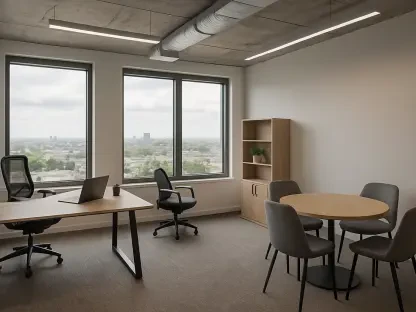What if the key to doubling productivity is found in giving employees the autonomy to decide where and how they work? As organizations continue to adapt post-pandemic, one striking development captures attention: flexible workspaces are gaining momentum. A recent survey shows a staggering 70% of employees now favor adaptable work environments over traditional office settings.
The Shift Toward New Work Models
The global pandemic acted as a catalyst in transforming rigid work paradigms, becoming a significant turning point in the nature of employment structures. Many people reimagined work-life dynamics, valuing flexibility and burnout prevention. These shifts reflect a broader societal push for improved work-life balance and employee satisfaction.
Embracing Workspace Diversity
Flexible workspaces stand out by accommodating myriad working styles and needs. Imagine a tech company where introverts can find solace in quiet zones, while extroverts thrive in collaborative spaces. Companies like Microsoft have embraced this model, reporting a notable boost in creativity and productivity. Such environments prove crucial in unleashing diverse talents, as employees are empowered to work in settings tailored to their preferences.
Insights from Specialists
Workplace strategists consistently emphasize the value of flexible workspaces. According to Claire Parsons, a renowned expert in human resources, “Adaptability is now a fundamental expectation.” Data supports her view, showing a 60% increase in employee engagement in organizations with adaptable work models. Businesses that have adopted diverse work practices share stories of enhanced collaboration and reduced turnover, underscoring flexibility’s pivotal role in driving success.
Implementing Flexible Work Environments
While the potential benefits of flexible workspaces are compelling, implementing them requires careful strategy. Companies need to invest in technology that supports hybrid work, such as state-of-the-art video conferencing tools and cloud-based collaboration platforms. Thoughtful consideration of employee preferences and needs enables organizations to foster a culture of trust, further enhancing productivity. By valuing autonomy, businesses can inspire innovation and accountability.
The evolution to flexible workspaces reshaped how businesses operated, encouraging them to continue adapting to future needs. This shift should prompt organizations to reassess employee engagement strategies, focusing on enhancing workplace adaptability and fostering creativity. In examining the past year’s advancements, it’s evident that flexible workspaces have paved new opportunities for both employers and employees to thrive in an ever-changing landscape.









